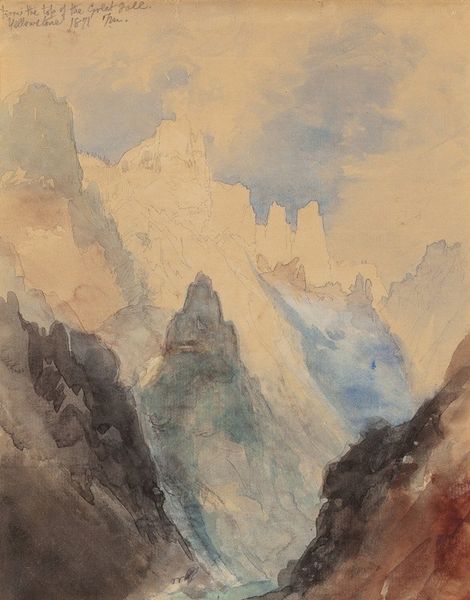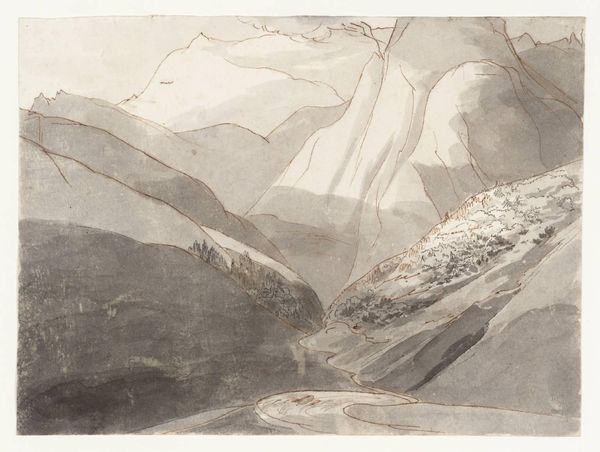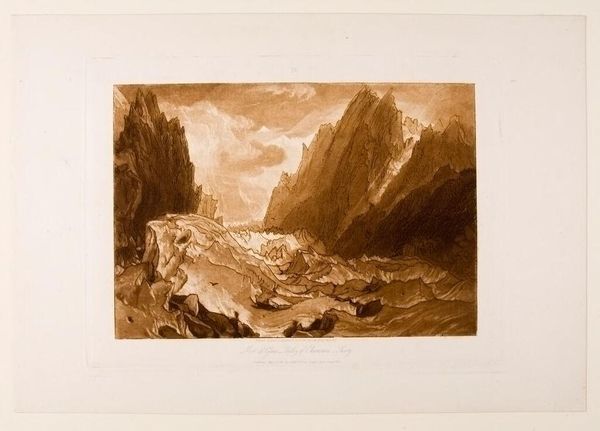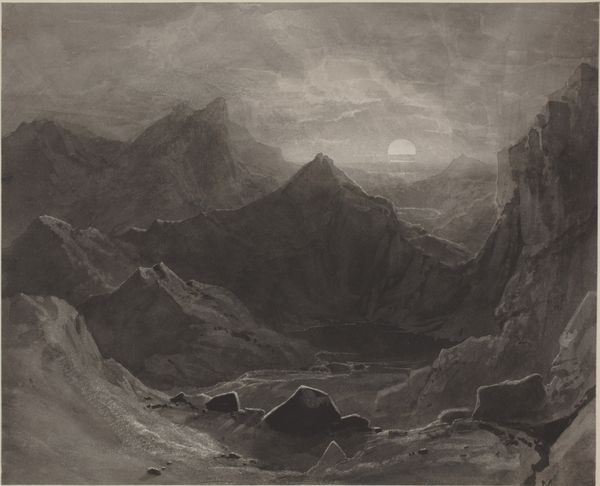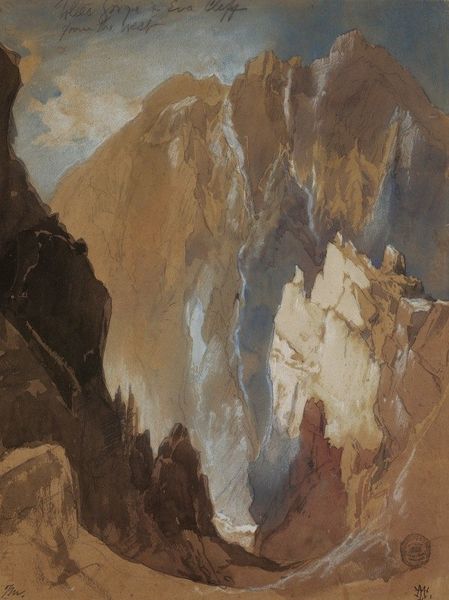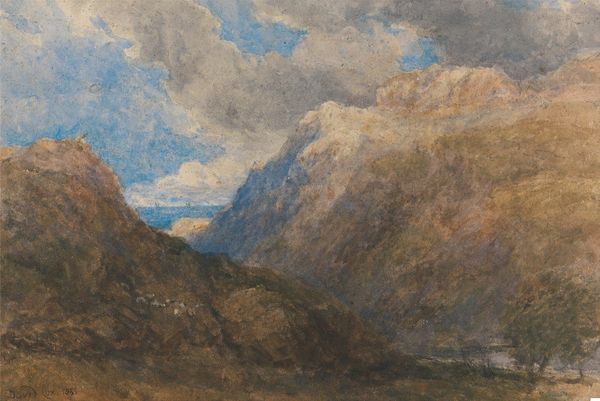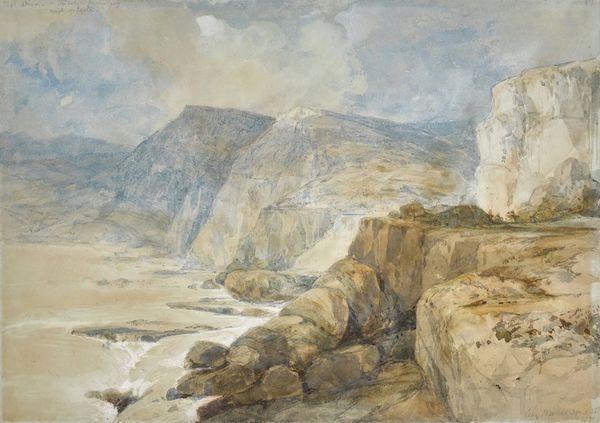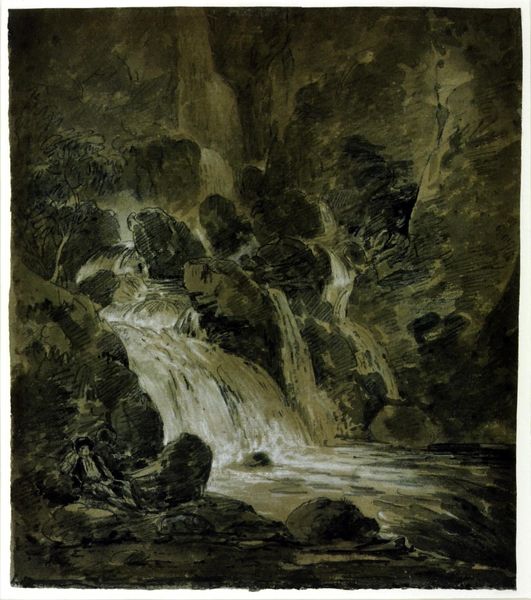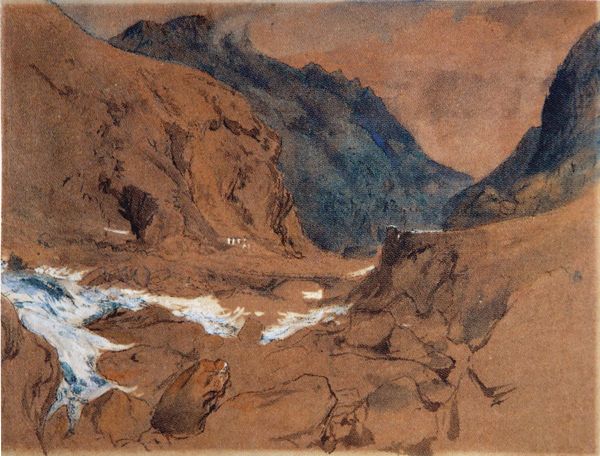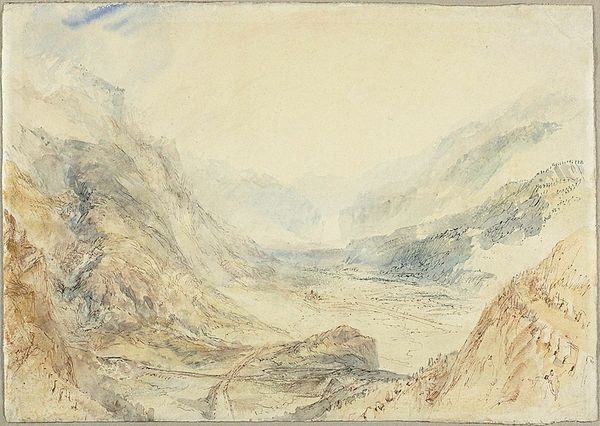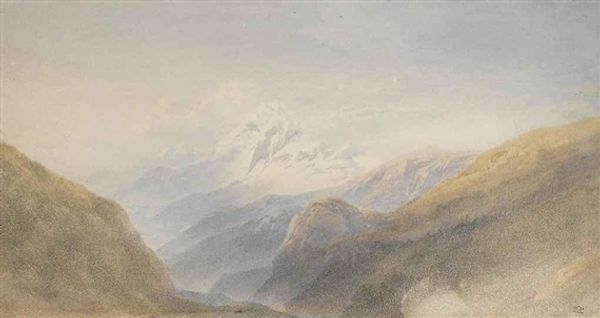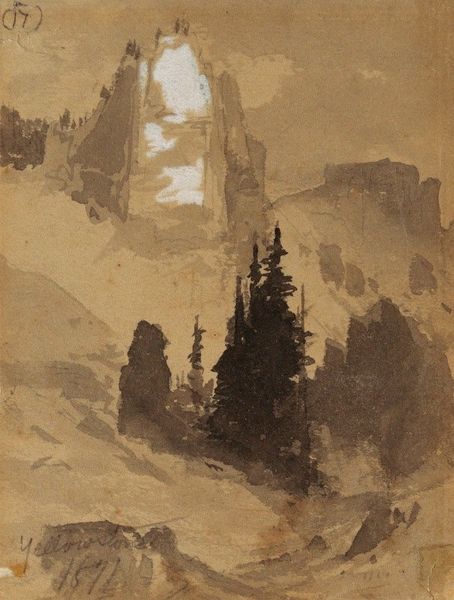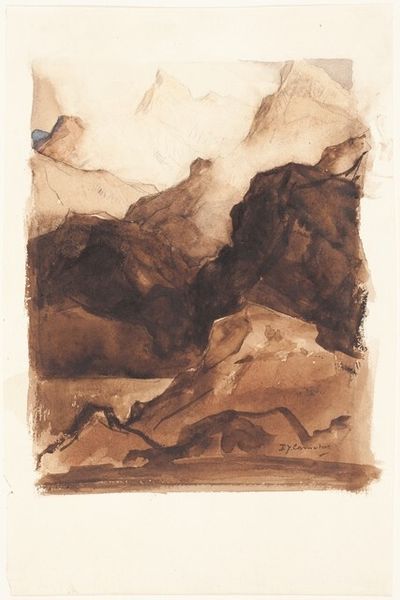
Copyright: Public Domain: Artvee
Editor: This is Thomas Moran’s "Toltec Gorge, Colorado," created in 1881 using charcoal, pencil, and watercolor. I'm immediately struck by how imposing the landscape feels, yet there's also a certain quiet solitude about it. How do you interpret this work, looking at it through your area of expertise? Curator: The gorge itself becomes a powerful symbol. It represents not just physical terrain, but also the formidable challenges, perhaps even the spiritual journeys, faced by those who ventured westward. The whiteness splashed down the mountain faces—what do you make of that contrast, against the muted browns? Editor: Well, the white against the brown feels very stark, almost like… bones or perhaps the sheer scale of the geological forces at play being laid bare. Curator: Precisely! The geological, temporal vastness confronts us. This land existed long before any humans laid claim to it. The inclusion of a handful of trees tucked within this huge mountain might symbolize humanity’s tenuous position within the grand scheme of nature. They endure, but seem small. What does that small grouping of trees say to you, culturally? Editor: Hmmm, that’s a great question. Perhaps it's about resilience? Despite the scale, there is still a presence and hint of hope, suggesting endurance. Curator: Precisely. The composition encourages a symbolic reading – power and vulnerability, ephemerality against endurance, and an echo of Romanticism. There’s both fear and beauty in nature’s sublimity. Editor: This has certainly provided me with a much richer context and way of viewing Moran's piece, thinking about the symbols within. Curator: And I appreciate your reading on the endurance hinted by those trees, offering a vital balance to the composition.
Comments
No comments
Be the first to comment and join the conversation on the ultimate creative platform.
